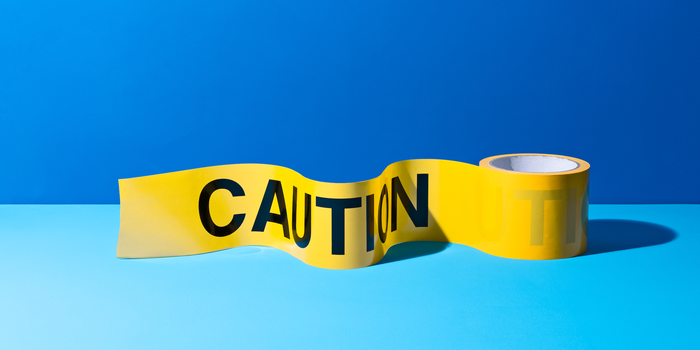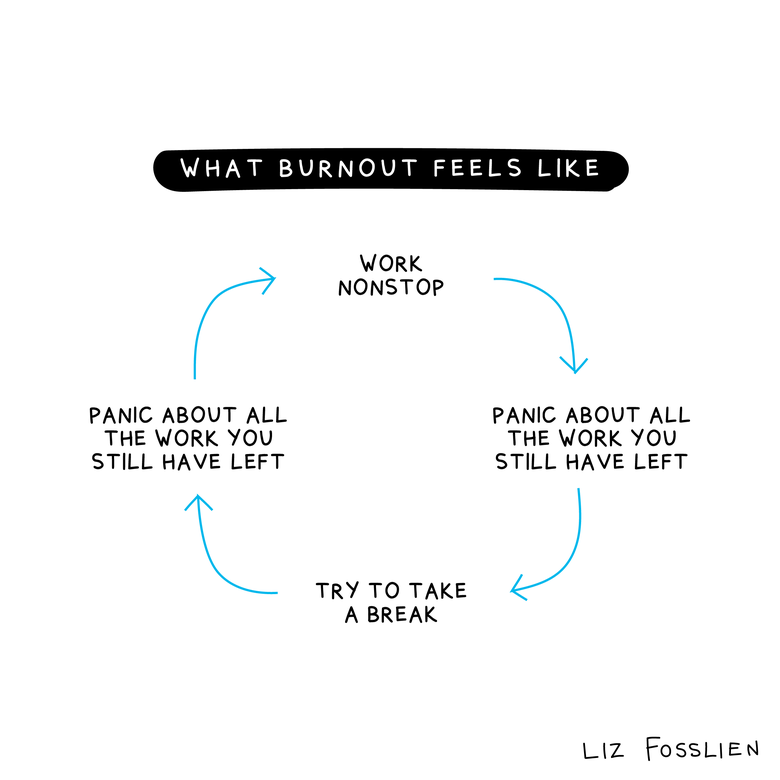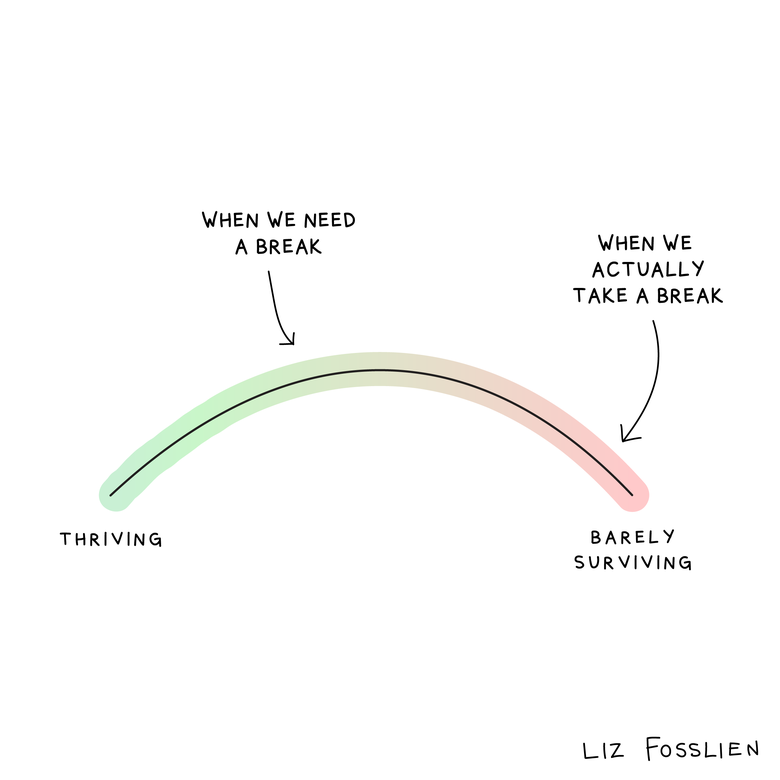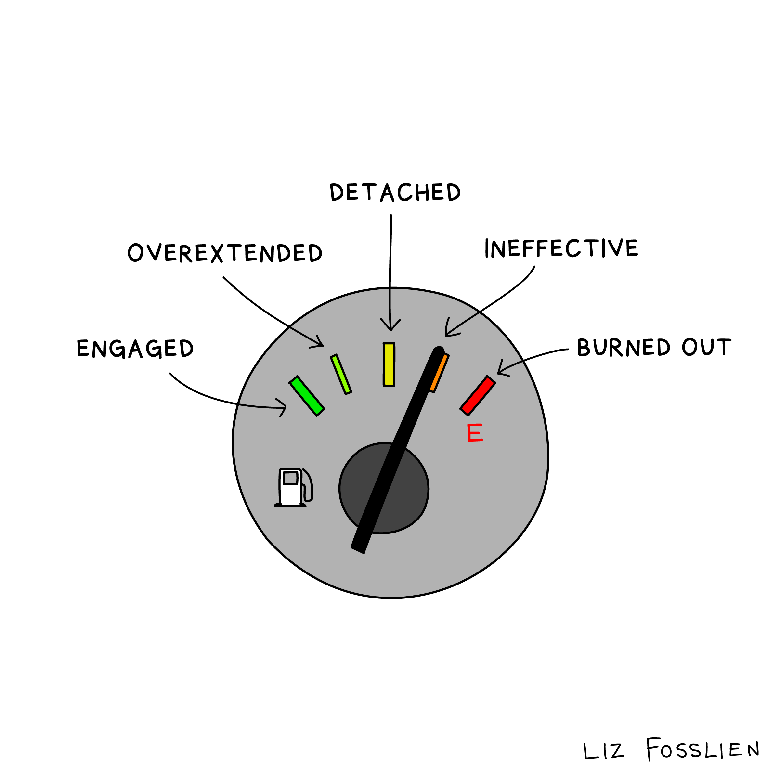
A vacation will not prevent—or cure—burnout. Many people believe taking time off will help them quickly bounce back from impending, brewing, or full-on burnout. But a few days off isn’t enough to keep the tide from coming in or to turn it back around.
That’s because burnout isn’t only about the hours you’re putting in. It’s also a function of the stories you tell yourself and how you approach what you do—at work and at home.
At its core, burnout is a symptom of capitalism. We imagine we’d feel much less overwhelmed if our health insurance, retirement plans, and ability to pay for our rent, mortgage, and any future children’s education didn’t rely solely on our ability to work as many hours as we possibly can for the highest hourly wage because these are our income-generating years (deep breath!).
And just as the benefits of capitalism tend to accrue unevenly along lines of income level, gender, and race, so too does the burden of burnout. The stresses of working a minimum-wage job and living paycheck-to-paycheck are extreme causes of burnout. Unsurprisingly, women and people of color are much more likely to experience burnout than their white, male counterparts.
We’ve been there. After writing and launching our first book, The Wall Street Journal bestseller No Hard Feelings: The Secret Power of Embracing Emotions at Work, and while writing our new book, Big Feelings: How to Be Okay When Things Are Not Okay, we each experienced burnout firsthand. We share four tips below about how to prevent burnout.

1. Recognize the early warning signs.
One of the most dangerous aspects of burnout is that it impacts self-awareness. When you’re in it, you’re running on adrenaline, and the momentum feels so exhilarating that you end up adding more and more to your plate. But once burnout hits, it can take months to overcome. So what early signs should you look out for? Here are some of the subtle cues that you might need to reassess how much you’re taking on:
- Basic activities like going to the grocery store feel overstimulating.
- You feel so overwhelmed you’ve started to cut activities you know are good for you (e.g., exercise or alone time).
- You’re saying “yes” even though you’re already at capacity.
- You find everyone and everything irritating.
- Getting sick and being forced to shut down for a bit sounds kind of nice.
- You’re all too familiar with “revenge bedtime procrastination,” when you stubbornly stay up late because you didn’t get any time to yourself during the day.
We’re quick to ignore these signs, but they’re important alarm bells. As Naveed Ahmad, the founder of Flourish, a company that helps people combat burnout, told us: “Sometimes life taps you on the shoulder with a feather, sometimes it hits you with a brick, and sometimes it runs you over with a bus. Learn to listen when it’s just a feather.”

2. Understand what type of burnout you’re headed toward.
The word “burnout” has become an umbrella term. It’s useful to understand exactly what you’re feeling so you can get the specific support that will be most helpful. If you feel fried because you’re pulling long hours, that has different implications than if you work from 9 to 5 but are depressed because you find your role meaningless.
The Maslach Burnout Inventory (MBI), the first clinically based measure of burnout created by psychologist Christina Maslach, looks at three dimensions of burnout:
- Exhaustion: You feel constantly depleted.
- Cynicism: You feel detached from your job and the people around you.
- Ineffectiveness: You feel that you’re never able to do a good enough job.
The MBI is often misinterpreted (and we understand why—it’s complicated!). People tend to focus solely on the exhaustion dimension. To help you better understand what you’re feeling, you can take our burnout profile assessment, which is a modified version of the MBI. The assessment will share suggestions for you based on your profile.

3. Take time to break the stress cycle.
When we ricochet from one thing to the next, we accumulate stress in our bodies. In their book Burnout: The Secret to Unlocking the Stress Cycle, Drs. Emily and Amelia Nagoski write that when our ancestors were faced with a predator, they would work with others to slay the beast or flee: the fight or flight response. Doing so required them to draw on what’s called surge capacity: the set of adaptive systems (think a rush of adrenaline or a pounding heartbeat) humans rely on to react to an emergency. But surge capacity only lasts so long, and our ancestors only used it in short bursts to escape death. When they successfully survived, they felt exhilarated and could then relax again. And so the stress cycle would be completed.
In the modern world, we operate on surge capacity all the time because we never complete the stress cycle. If you’re stuck in traffic for hours, you won’t immediately feel better as you walk through your front door. Your body will still be in the middle of a stress response. And if you haven’t made it a habit to wind down, you’ll continue to produce the stress hormone cortisol for the rest of the evening. Eventually, all that accumulated stress will catch up to you and you’ll crash.
Here are the seven ways to complete the stress cycle:
- Cry
- Take slow, deep breaths
- Do a physical activity
- Laugh
- Hang out with friends
- Do something creative, like writing or drawing
- Engage in physical affection, like asking for a hug
4. Learn to draw—and respect—your own lines.
Here’s a secret of adulthood: No one else is going to draw your lines for you. You may sometimes wonder: Why don’t the people who love me help me not overdo it? Often, it’s because they want you to be successful! And a marker of success in our society is being busy. They may be just as busy as you. Or they may not even know what your boundaries are. “People don’t know what you want. It’s your job to make it clear. Clarity saves relationships,” Nedra Glover Tawwab, a therapist and relationship expert, writes in Set Boundaries, Find Peace: A Guide to Reclaiming Yourself.
It takes courage to say no and stick to it without feeling guilty. The next time you’re on the brink of saying yes to something you’re not excited about, pause and ask yourself:
- If I say yes, what do I gain?
- If I do this, what will I not be able to do instead?
- If I say no, what’s the worst thing that would happen?
For example, Liz struggled with saying no until she created a set of rules she can reference. Now she’ll say, “I have a rule that I don’t book social events on Thursday nights.” She’s found that people tend to take a “no” less personally when it’s tied to a rule. “[People] accept that it’s not you rejecting the offer, request, demand, or opportunity, but the rule allows you no choice,” writes author Ryan Holiday.
Your capacity is also going to be different from everyone else’s. Your friends, coworkers, and even partner may not share your burnout triggers. For example, if you’re an introvert and your partner is an extrovert, they may see you in a slump and encourage you to schedule dinner with friends or go to a show. That’s what they would do to feel better. But that might be the exact opposite of what restores you. Remember that behind every no is a deeper yes, even if that yes is just to yourself.
Burnout is your body and soul forcing you to pay attention to them. Avoiding burnout—and healing from it—involves learning what your own innate pace of life is, and then inhabiting that pace.
Adapted from Big Feelings: How to Be Okay When Things Are Not Okay by Liz Fosslien and Mollie West Duffy, in agreement with Portfolio, an imprint of Penguin Publishing Group, a division of Penguin Random House LLC. Copyright © Liz Fosslien and Mollie West Duffy, 2022.